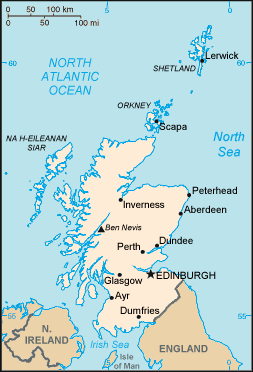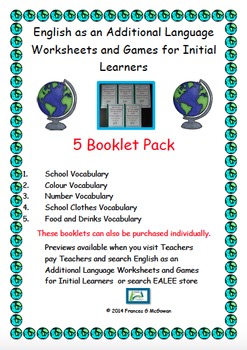It’s fitting that this month’s guest blogger comes from Scotland because January 25th is Burns Night, which honors Robert Burns. Frances McGowan is a retired EAL teacher and the name of her TpT store is EALEE, which stands for English as an Additional Language Excellent Education. (EAL is one of the acronyms used to describe a teacher of English Language Learners.) Frances presents general information about teaching in Scotland as well as more specific information about teaching English Language Learners.
 |
| Map of Scotland; source: Wikimedia Commons |
In her own words:
General Information about Scottish Schools
In Scotland, there are state schools and independent/private schools. The state schools are either non-denominational or for Catholic pupils. Catholic education has been provided in Scotland for many centuries. The independent schools may have a religious affiliation. Most children attend non-denominational state schools.
There are two routes to becoming a primary or secondary teacher in Scotland; a four-year undergraduate programme or a one-year Professional Graduate Diploma in Education (PGDE) programme in either primary or secondary teaching. To be a subject teacher of English in a Secondary school, teachers must have a degree in English and Post Graduate Diploma In Education (PGDE).
 |
| Edinburgh Castle; source: Pixabay |
I have recently retired but for many years I taught English as an Additional Language (EAL). I worked as a peripatetic teacher at state schools. When I started, I worked in Nursery, Primary and Secondary, providing direct teaching and advice to mainstream teachers on strategies and resources for supporting EAL pupils in a Local Education Authority. In recent years, because of ever increasing numbers of EAL pupils, we only provided advice to Nursery Schools. The age span from Nursery to the end of Secondary could be from 3 years to 18 years.
Some education authorities have language units where new arrivals who are initial learners of English attend for a short period. However, where I worked we didn’t have the numbers to justify funding of a language unit. Funding for EAL learners comes within additional support needs and is awarded annually by the Scottish Government to Local Authorities (LAs) who then have control over the way in which this funding is used. Many Scottish LAs use part of this funding to establish specialist teams delivering EAL teaching and advisory services in schools and Early Years settings. All of the services across Scotland are different, reflecting local cultures, demographics and demand. However, the vast majority of the funding is used to cover the cost of specialist EAL teachers and bilingual support assistants, as well as for teaching resources and training. I was part of a specialist EAL team.
The School Calendar
In general, the school session starts in the middle of August and ends at the end of June. School holidays can vary by a few days over the Local Authorities. The pupils’ school day in Primary schools generally starts at 9.00am. There is an interval for 15 minutes in the morning, 45 minutes lunch break and school finishes at 3.00pm. In Secondary Schools, the pupil’s school day generally starts at 8.50am. There is a 15 minutes interval in the morning and 45 minutes lunch break. On Mondays, Wednesdays, and Thursdays pupils finish at 3.40pm. On Wednesdays and Fridays pupils finish at 2.50pm. There are variations among Local Education Authorities (LEAs).
My working hours were 35 hours per week in total, 22.5 hours of which had to be teaching time with pupils. Preparation work could be done in a place of our own choosing including at home, but liaison and consultation took place in establishments. My working hours often exceeded 35 hours due to the preparation and liaison required for a large number of pupils and schools.
Teaching English Language Learners in Primary and Secondary Schools
In Primary Schools, ideally, I liked to have 45 minutes for teaching beginners in a tutorial, but sometimes only 30 minutes was possible. Visits were usually only once per week. When the pupil progressed from the basics, I incorporated and differentiated classroom materials. Eventually if time allowed, I provided in class support to the pupil. Part of my role was to provide professional development to class and subject teachers. I usually produced and provided handouts containing background information about pupils and strategies to be used in class.
In Secondary Schools, again I felt that tutorials were more beneficial for initial learners. When pupils progressed, I provided in class support. Periods were usually 50 minutes. I also produced, sourced and differentiated resources for use by myself in tutorials and for class/subject teachers to use in class. Resources like my English Worksheets and Games for Initial Learners Pack were found to be very useful by class teachers who didn’t have a lot of time to work with individuals, due to the demands of other class members.
 |
| Click HERE for more info about this resource |
Initial Learners of all ages found these kinds of worksheets and games to be very helpful and they allowed time out from constantly listening to a language that they didn’t understand. The workbooks enabled initial learners to work independently when they couldn’t be included in the class work. The games reinforced the targeted vocabulary, encouraged interaction with native English speakers and consequently provided further opportunities for building friendships and acquiring English. The title for Booklet 1 in the previously mentioned pack is English as an Additional Language Worksheets and Games for Initial Learners School Vocabulary. There are 5 booklets altogether. The other topics are Colour, Number, School Clothes and Food and Drinks.
EAL Curriculum and Assessment
The work I did with pupils in tutorials depended on need. I did not have to follow a set curriculum. Initially, I taught the vocabulary that was needed in school. I planned a lesson, taught the lesson, then assessed progress. This cycle determined the next work to be done. When the pupil had sufficient English to understand, he/she was included in choices about what work should be done. Class/subject teachers also provided information about what support was needed. I often looked at pupils’ jotters to see the kinds of errors that were being made and then focused on providing support. From my assessment I decided where input was required and planned the next step.
Because the pupils were scattered over the schools, I often worked with individuals or groups of up to about 6 pupils. Sometimes native English-speaking, able, articulate pupils were included in the groups so that the EAL pupils could hear good models of English.
My reports on pupils focused on what pupils had achieved in the Listening, Speaking, Reading and Writing skills in English. Progress in Maths was also included. My comments were related to pupils being, Successful Learners, Confident Individuals, Effective Contributors and Responsible Citizens. EAL pupils were graded by stages – Initial, Emergent, Consolidating, Competent and Native English Level. We had profiles with set targets for each stage. When pupils had met all the targets in the four English skills for a particular stage, they were classed as having reached the next stage. We did not have set tests for EAL pupils. When EAL pupils were included in class work, they sat the ordinary class tests, but when I had the opportunity I made staff aware that this was not a true representation of their ability due to language and cultural difficulties.
 |
| Language Tree created by students at EALEE’s school; source: EALEE |
In recent years there have been changes to assessments and in the 2017 there will be more changes. In 2017 new national, standardised assessments are to be introduced for pupils in P1, P4 and P7, as well as for youngsters in the third year of secondary school. The focus will be on literacy and numeracy.
My main educational aim was to help pupils to reach a stage where they could be fully integrated into the school curriculum. After the basics, the content of my work supported the work of the class/subject teacher. In addition I provided some secondary pupil input for the Scottish Qualifications Authority (SQA) ESOL qualifications.
In 2005, Learning and Teaching Scotland produced guidelines for teaching EAL pupils. It is called Learning in 2+ Languages and while I was working was considered to be “the bible.” The Curriculum for Excellence is a major educational reform with the aim of providing a wider, more flexible range of courses and subjects.
Other Responsibilities
In addition, I attended parents’ evenings. Parents often brought a friend or a pupil to interpret. Funding for professional interpreters was seldom available. I also used visuals, drawings, diagrams, etc. and home language dictionaries to aid communication. There was a regular intake of new arrivals, so we worked on a priority system, giving initial learners priority. To find time to work with the new pupils, sometimes difficult decisions had to be made when withdrawing support from pupils who had made progress. These pupils were then put on to a monitoring list and were monitored at least once a year.
I also had other responsibilities for fully supporting the whole pupil. In addition to education I was concerned about physical, social, emotional spiritual and psychological development. One of my efforts towards making EAL pupils feel respected and included was the running of home language clubs. I wanted to raise the status of the home language and reinforce the importance of maintaining the home language. The clubs each ran for 6 weeks. Native English speakers were keen to attend. Parents came in and I provided games to be played to teach colours, numbers and phrases in the home languages. One mother provided a cooked dish from her home country. All seemed to enjoy the experience and native English speakers saw their EAL peers in a new light. To raise the status of the home language, I also encouraged the display of the home language in schools and writing in the home language. Pupils and parents made signs or commercially-produced signs were purchased.
 |
| The saltire–the flag of Scotland; source: Pixabay |
If you would like to learn more about Scotland or teach your students about Scotland, please take a look at Frances’ Free Scottish Words and Expressions for EAL/ESL Students and her resource Scotland Information and Worksheets for EAL/ESL/ELL/ELD/EFL. You can find more of Frances’ products for English Language Learners at EALEE, her TeachersPayTeachers store. For more information about Scotland’s education system, click HERE.
Thank you very much, Frances, for giving us such a comprehensive look at what it’s like to teach ELLs in Scotland and about Scottish education in general. And for more information about Robert Burns and Burns Night, you can find them on my Pinterest board about holidays around the world.
You can find more posts in this series by clicking on these links to read about education in: New Zealand, Australia, Morocco, Sweden, England, United Arab Emirates, Scotland, Quebec (Canada), and South Africa.




